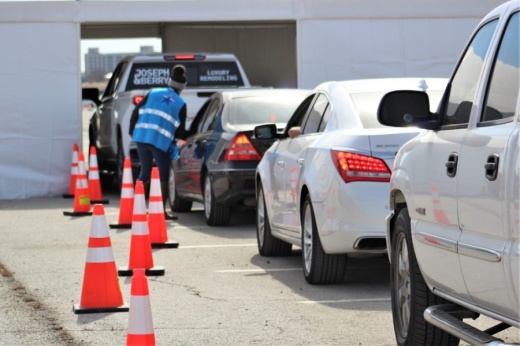How do you think the vaccine rollout here in Texas has gone so far?
I’m still amazed that we’re just barely a year into the outbreak of COVID and have a vaccine that we are administering right now. ... Related to the allocation of the vaccine here in the state of Texas, we took a little bit of a different strategy than the national strategy initially. But I would say the national strategy is now aligned in many ways with what we’re trying to do here, where instead of immunizing a variety of occupations we started off first immunizing health care workers and getting them immunized very quickly in December and then focusing on those that were most at risk of being hospitalized or dying from COVID.
Do you see any Texas counties faring much better or worse with vaccinations so far?
It’s not perfect across the state of Texas, but we do watch those data, and if there is a county that’s falling behind, think through, ‘How do we get more vaccine into that county?’ And likewise, if there’s a county that has a larger number of their residents that have been immunized, think through, ‘How do we adjust to make sure that it’s as fair as possible across the state?’ ... The state’s looking at mobile outreach teams in some of the rural areas, bringing the vaccine closer to them, thinking through different ways to improve those immunization numbers in more rural areas.
Do you think Texas' process is providing vaccines to communities with less health care resources?
I wouldn’t say things are perfect, but that is a role where the local community can be very helpful. That’s hard to solve from the state level. ... We also need to work to make sure that there’s a demand for the vaccine in some of those communities also, and this gets to the vaccine hesitancy component, that especially in communities of color the rates of hesitancy initially were significantly higher than other ethnic groups. And there’s reasons behind that, related to Tuskegee and other things that have happened in our past.
What do you think of the speed of the vaccine rollout so far?
The amount of vaccine coming to Texas in the last several weeks has gone up significantly. We will be approaching a million first doses per week coming up statewide. That is a major milestone, so things by their nature are slow initially, because the demand is much higher than supply. But it looks like supply is revving up, and so I am pleased that we’re reaching that kind of level now in the state.
What categories could be included in the next phase of Texans eligible for vaccination, and when could that phase begin?
I think overall there will be continued reliance upon the data of who is getting sick in the state of Texas and making sure that the vaccine is used to prevent those individuals that are actually getting sick versus preferentially treating one occupation over another. Again, the biggest predictors for severe disease have been age throughout this, and so I think you’ll see continued focus on getting vaccine into older individuals in the state of Texas and gradually moving that definition of older to younger and younger individuals.
Why did the state decide to grant larger vaccine allocations to county hub sites versus smaller providers, and do you expect smaller sites will be getting more shipments as the process continues?
There was the general decision that early on, as we were trying to ensure we very quickly got the vaccines into peoples’ arms as quickly as we could, that that seemed to be a better strategy to make sure we used every week the allotment we received as quickly as we could. I think that has been useful for this phase, but I do think that none of these strategies are perfect, and you’ll probably see a more blended strategy coming up and providing more vaccine to [a] larger number of providers, which will be more convenient to individuals.
Is herd immunity a goal for this process? What does that mean for Texas' population?
I would love it if we had herd immunity, and that will take about 80% or so of the population that has either been vaccinated or has natural disease. But it’s not my expectation that we’ll necessarily get to a level where the virus just totally goes away. ... It wouldn’t surprise me that this virus, like other coronaviruses, eventually becomes part of that normal flora that yearly causes some problems but won’t be nearly as severe in the future because those that are most at risk will now have immunity to it.
Are there any other items you wanted to address?
It’s going to take a little bit of time to get through the rest of these groups. In the meantime, we need to continue to do these simple things [such as] wearing masks. And I say ‘physically distancing’ and not ‘socially distancing’ and being careful until we get into a better position with the virus right now. So it’s going to be a while that we’re going to continue to wear masks and do those things.





